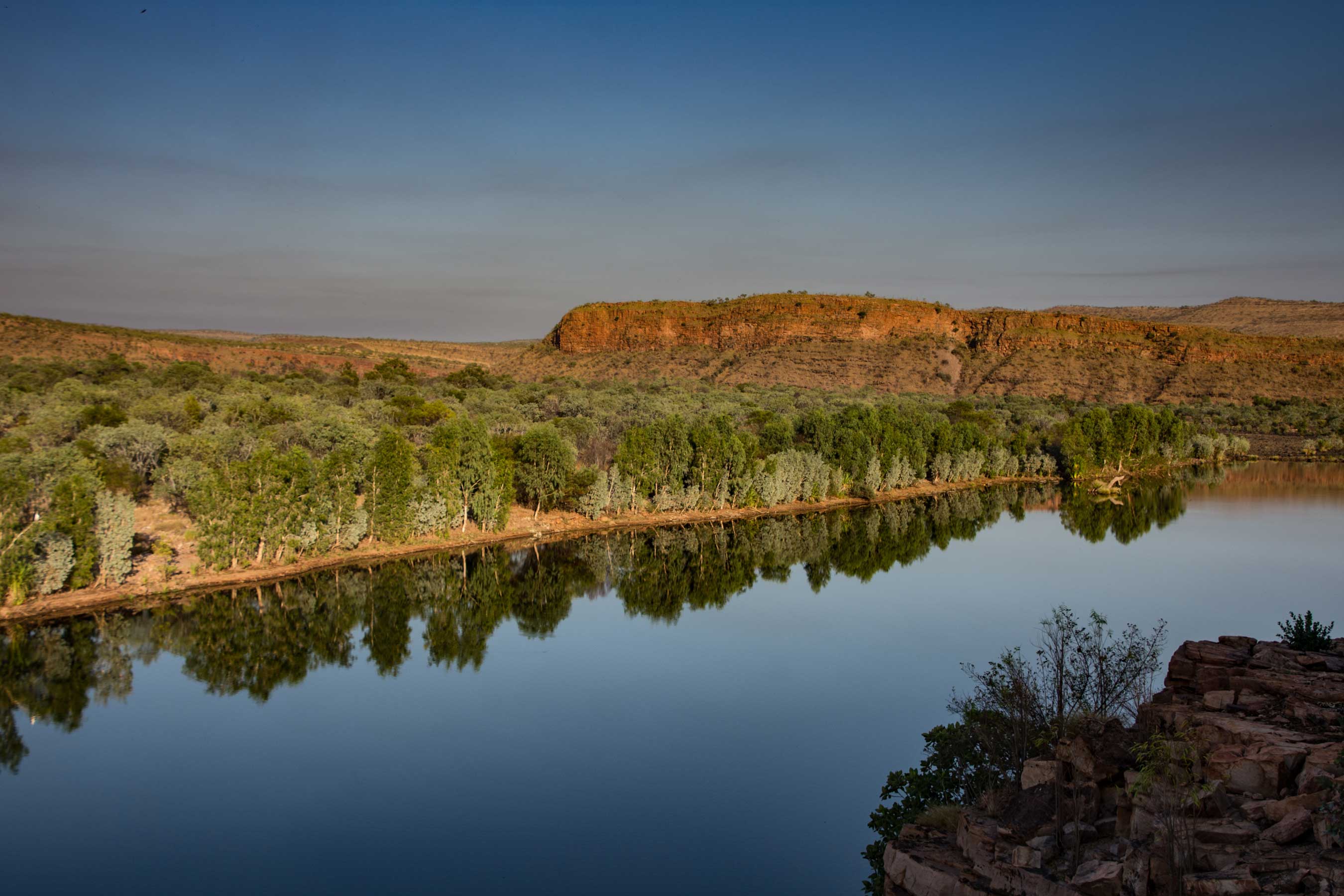Windjana Gorge: A 4WD Gateway to Kimberley’s Prehistoric Heart
Tucked deep in the Kimberley region of Western Australia, Windjana Gorge is a rugged, awe-inspiring destination that feels like a step back through time. With sheer limestone walls, a winding riverbed, and a resident population of freshwater crocodiles, it’s one of the region’s most remarkable—and rewarding—4WD-accessible locations.
But getting there isn’t as simple as typing it into Google Maps. This is remote country. It demands preparation, respect, and the kind of adventurous spirit that 4WD touring was made for.
Why Windjana Gorge Belongs on Your Touring Bucket List
Windjana Gorge slices through the Napier Range, a 350-million-year-old limestone reef formed when much of the Kimberley was submerged beneath an ancient ocean. Today, its **towering cliffs—some over 100 metres tall—**stand as a fossilised record of a long-lost marine world. Fossils of ancient marine creatures like orthoceras and nautiloids are embedded in the walls, while the floor of the gorge is alive with birds, bats, and the unmistakable slow blink of freshwater crocodiles.
This striking landscape was also a key site in the resistance of the Bunuba people during colonial times. Local leader Jandamarra used nearby Tunnel Creek and Windjana Gorge as strongholds in his fight for Country—adding cultural and historical depth to the area’s natural beauty.
Getting There: The Journey Is The Adventure
To reach Windjana Gorge, most travellers traverse part of the Gibb River Road, a legendary 660km track linking Derby and Kununurra. From Derby, it’s about 145km east to the Windjana Gorge turnoff, followed by a rough but scenic 20km stretch along Fairfield-Leopold Downs Road.
While the road is graded during the dry season, it’s unsealed and corrugated, with creek crossings that vary depending on recent rainfall. A high-clearance 4WD is essential—not just for capability, but for comfort and reliability in the bush.
Expect red dust, soft shoulders, and the occasional washout. But also expect solitude, ancient geology, and wild beauty at every bend.
What to Do at Windjana Gorge
Once you arrive, park up and lace up your boots. The main gorge walk is a 3.5km return trail along the sandy bed of the Lennard River. It’s relatively flat, though hot in the midday sun, and passes through some of the gorge’s most spectacular terrain.
Here’s what to look out for:
-
Freshwater crocodiles: Dozens of them bask on the banks or float like logs in the water. They’re generally harmless, but don’t get too close.
-
Aboriginal rock art: Keep an eye out for ochre handprints and rock etchings hidden in overhangs near the entrance of the gorge.
-
Fossils: Ancient coral and shell imprints are visible in the limestone walls—fossils from the Devonian period.
-
Birdlife and bats: Expect to see corellas, fruit bats, and birds of prey circling overhead, especially near dusk.
Practical Tips for Touring Windjana Gorge
Best time to visit:
The dry season (May–October) offers the safest and most comfortable travel conditions. Roads are graded, creek levels are low, and temperatures—while still hot—are manageable.
Where to stay:
Windjana Gorge has a basic bush campground with toilets and bore water. Fires are usually not permitted, and there’s no fuel, power, or phone reception—so come self-sufficient. Many travellers combine this stop with nearby Tunnel Creek or Bell Gorge.
What to pack:
-
Recovery gear (snatch straps, maxtrax, compressor, shovel)
-
Plenty of drinking water (no potable water on site)
-
Food and fuel for at least several days
-
Sunscreen, insect repellent, and hat
-
Paper maps or an offline GPS (no reception)
FAQ
Do I need a 4WD to visit Windjana Gorge?
Yes. The access road is unsealed and often corrugated. A 4WD is essential to navigate it safely, particularly after rain.
How long is the gorge walk?
The main walk is 3.5km return. It takes around 1.5–2 hours, depending on your pace and how often you stop to admire crocs or fossils.
Is it safe to swim?
No. Although freshwater crocodiles are less aggressive than their saltwater cousins, swimming is not advised. Admire them from a safe distance.
Can I camp overnight?
Yes. There’s a DEC-run campground with basic amenities. It's a peaceful place to unwind after a long day’s drive.
Is there Aboriginal significance to Windjana Gorge?
Absolutely. The Bunuba people have a deep connection to this land. It’s a place of both cultural and historical significance, particularly in relation to the resistance of Jandamarra.
Windjana Gorge is the kind of place that reminds you why you bought a 4WD in the first place. The sense of scale, silence, and ancient history etched into the landscape is something that stays with you long after the dust settles.
So if you're planning a Kimberley adventure, make the detour. Air down your tyres, respect the Country you're travelling through, and let the Kimberley show you a side of Australia that’s as raw as it is unforgettable.


